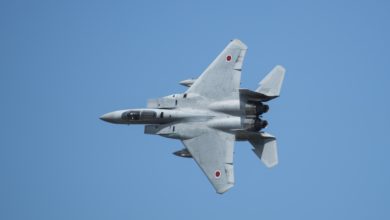Japan is developing a drone-based hypersonic missile detection system, Sankei Shinbun reported, citing the country’s ministry of defense (MoD).
According to the Tokyo news outlet, a large number of infrared-enabled unmanned aerial vehicles (UAV) will hover close to enemy airspace to detect initial missile activity.
A hypersonic missile has a speed greater than Mach five, making detection and interception with conventional anti-missile systems extremely difficult.
Technology Verified in 2019
The outlet revealed that “technology verification” for the system was completed in 2019.
Additionally, it stated that the MoD is researching other “early detection systems,” such as ship-borne radar and satellite constellations that put “a large number of small artificial satellites into low earth orbit in space as a countermeasure against hypersonic weapons.”
The research aims to develop a “multi-layered surveillance network.”
Japan’s Ballistic Missile Defense System
Japan currently has a multi-layered ballistic missile defense system that includes a group of radars and satellites to detect, and US-made Aegis destroyers, and a Patriot Advanced Capability-3 (PAC-3) system to intercept incoming missiles.
However, the growing threat of hypersonic missiles has spurred the country to develop a more effective countermeasure.
The threat emanates particularly from Japan’s neighboring region, where Russia and China are fast developing their hypersonic missile capabilities.
Missile Threat From China, Russia
Moscow recently test-fired its Zircon hypersonic cruise missile, while a long-range hypersonic missile for its aerospace force is in the pipeline.
Beijing, meanwhile, is also developing two types of hypersonic weapons: hypersonic cruise missiles (HCM) and hypersonic glide vehicles (HGV), according to The Jamestown Foundation.
The HCM relies on “powered flight with air-breathing engines.” The HGV, meanwhile, is “launched into the upper atmosphere (50-80 kilometers, or 30-50 miles) and then glide unpowered toward a target,” the think tank wrote.












